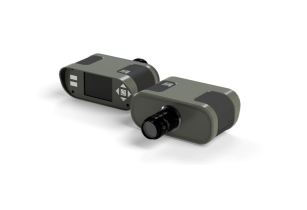Wideblue, Glasgow-based product consultancy, has designed a low-cost camera, which will be used in agriculture to test early-onset disease in various crops including potatoes and soft fruits
The system aims to determine potato plant health with approximately 88 per cent accuracy.
Led by Wideblue, the project was a collaboration between Wideblue and the University of Strathclyde, University of the West of Scotland, the James Hutton Institute and Galloway and Macleod. The project was funded by Innovate UK.
The Hyperspectral Crop Camera (HCC) takes images across a wide continuous spectrum of wavelengths of light. In the case of the HCC prototype, this was in the visible wavelength region. However, the same technology within the device can be applied to non-visible wavelengths such as short wave infrared.
The device uses a linear variable filter (LVF) rather than a traditional diffraction grating (similar to a prism). The LVF allows light to pass through it linearly along its length. By moving this component rapidly across a standard image sensor (camera), the HCC can capture images in real-time across the full visible spectrum of light, one wavelength at a time.
According to Wideblue, this is useful for imaging crops as this can highlight drought stress or disease that are difficult to detect with the human eye. Equipped with feature extraction and classification algorithm, the proposed system can be used to determine potato plant health, for example, with approximately 88 per cent accuracy.
Besides, this algorithm is capable of species identification and is demonstrated as being capable of differentiating between crops such as rocket, lettuce and spinach.
Russell Overend, managing director, Wideblue, said, “We have lowered the cost by a factor of 10 but the device offers comparable performance to traditional machines.”
In April 2018, Wideblue was acquired by Kansas-based Pivot International.


